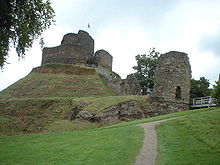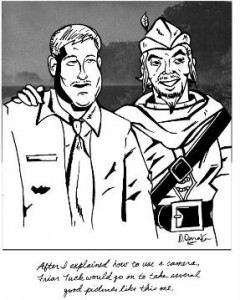This is mark Joseph “young” blog entry #47, on the subject of Character Routines.
This is about the creation of my book Verse Three, Chapter One: The First Multiverser Novel, now being posted to the web site in serialized form. This “behind the writings” look definitely contains spoilers, so you might want to read the referenced chapters before reading this look at them. That link will take you to the table of contents for the book; links below (the section headings) will take you to the specific individual chapters, and there are (or will soon be) links on those pages to bring you back hopefully to the same point here. There were also numerous similar previous mark Joseph “young” web log posts:
- #18: A Novel Comic Milestone (which provided this kind of insight into the first six chapters),
- #20: Becoming Novel (covering chapters seven through twelve),
- #22: Getting Into Characters (for chapters thirteen through eighteen),
- #25: Novel Changes (chapters 19 through 24),
- #27: Novel Continuation (chapters 25 through 30),
- #30: Novel Directions (chapters 31 through 36),
- #33: Novel Struggles (chapters 37 through 42),
- #35: Quiet on the Novel Front (chapters 43 through 48), and
- #37: Character Diversity (chapters 49 through 56),
- #39: Character Futures (chapters 57 through 60), and
- #43: Novel Worlds (chapters 61 through 66).
This picks up from there. Our characters are settling into new plans.
There is some essential background to the book as a whole in that first post, which I will not repeat here.
Quick links to discussions in this page:
Chapter 67, Slade 22
Chapter 68, Hastings 24
Chapter 69, Kondor 23
Chapter 70, Slade 23
Chapter 71, Hastings 25
Chapter 72, Kondor 24
People who quit addictions remain addicted. My father quit smoking in essence by saying that he did not need to have a cigarette right now whenever he wanted one, and managed not to have one for half a century. Bob Slade had quit smoking before he was a verser, which is why he always had those matches, later toothpicks, in his mouth, but the tense situation of finding himself trapped and hunted on someone’s starship made him nervous enough that he wished he had one.
Slade realizes that he’s having something of an alien encounter, but the crew looks human, so he’s dealing with that in his own offbeat way by discussing little green men.
The spell is gibberish. I needed him to cast a “darkness” spell, and the particular concepts of magic he was learning from Omigger involved incantations in lost languages combined with specific movements (and sometimes materials) to tap supernatural energies. Darkness is a relatively easy spell, in Multiverser terms, as far as what works in different worlds, and it’s defensive without being aggressive.
Although this is a Blake’s 7 inspired world, my captain is more like Kirk than Blake (although I think he’s more like a choral conductor I had in New Jersey All-State in 1971), and my computer/science guy has more Spock than Avon in him. Slade’s claim that he called some darkness makes no sense scientifically, but as I wrote decades ago, in magic cold and darkness are energies opposed to heat and light, not mere absence of energy.
My predictions concerning the demise of TV and console games seem to be on track a bit faster than I anticipated, but it certainly made sense to assume that they would be unknown this far in the future. I had seen PBS specials covering wearable computers, and was expecting them to move into use more quickly than they have, but they do seem to be coming via the smartphone and possibly Google Glass®.
The name game is something that happens with versers, because no one knows who you are until you tell them. I’ve often had players invent names to identify themselves, or use the names of fictional characters. Bob at this point just gives them the names people have used for him in the past, and the reference to his girlfriend is a throwaway—I never detailed the girlfriend.
In game, I was working with Chris Jones’ character Shadow, who had the ability to become invisible, was incredibly strong and very hard to hurt, and could fly. He grabbed the ghoul and flew with him, and let me pretend I was doing it somehow. We got the guns after we reached the airport. Most of the rest of it was very similar to the game, although I think the game character chose Atlanta. I liked the idea that Arnie’s now long dead parents retired to Miami so he could visit their graves there.
I was not sure what should happen to the bullet that hit the wall. It could have deflected, but that would have created a serious danger that it would hit Arnie, and I didn’t want that. I thought it made sense for a telekinetic force wall, as opposed to a psionically generated force shield, to hold things that hit it, and prevented the dangerous bouncing.
I know that cursing is common in modern books, but it’s not part of my speech patterns and I saw no reason for including it in the books. It was simple enough to say that Arnie cursed. I have often wondered how I would cover this if it ever went to film or video, because of course he would have to say something.
The guns will become part of Lauren’s gear. They are just like a set my character has. John Cross has since raised issues with whether the design is possible, but has concluded that it could be, given certain assumptions that are not contrary to the book.
I liked the gag about dropping him at the airport where people land safely all the time, instead of just dropping him from wherever they were over Philadelphia. She doesn’t actually say that she could smash him into the ground below or put him down gently, but she conveys it in the metaphor of landing at the airport.
That iridescent indigo sky is among my favorite colors, and I included it largely because of that.
Kondor’s wariness probably reflects the way I run game characters when I’m playing the party leader: always cautious, moving slowly and keeping eyes open at all times. I don’t like to lose party members, and I don’t often lose them.
I notice two points now, in retrospect. One is that I never mention horses in the telling in the book. Often in play characters will ask for horses to make the trek more quickly. The other is that when I created the world I made the distance twelve miles, which no one can walk in an hour. The “less than an hour” is not from the castle, but from the sunrise at the second crossroad.
I like the phrase, “monumental reminder of his own mortality” as a description of a graveyard. I should shorten it, removing the possessive, and put it on a Facebook image card or something.
People are often uncomfortable among dead bodies, and for many that extends to cemeteries. I thought it was a good counterpoint for Kondor’s atheism and general skepticism of all things supernatural that he could not account for his own discomfort with tombs, and that his explanation that it was a reminder of his mortality was both a plausible excuse and an answer that had been invalidated by his experience. It also sets up his own internal inconsistency, that he does not want to admit he is afraid of something in a graveyard but he is compelled to express the fear through his actions.
Standard marching band steps are usually a short eight steps to five yards or a long six steps to five yards. Both of those are slightly unnatural practiced steps. A standard pace—a double stride—is about five feet, varying from one person to another. Ten yards is thirty feet, six paces or twelve strides, so his steps are a bit short. He is struggling to do this.
People think that football fields are a hundred yards long; they are actually a hundred twenty yards long, due to the end zones of ten yards each. Kondor makes, and then corrects, that mistake, although he is estimating, and he is trying to encourage himself.
I wanted my characters to be credible adults who did not swear. It was easy with Lauren, and with Slade his oaths are all references to Pagan deities. With Kondor, the solution was that he was raised to avoid such words, and had his mouth washed out with soap more than once for using them, so he tended to avoid saying them.
When I originally designed the vorgo, I described it as exactly the size and shape of a bowling ball, roughly the same weight. Someone suggested that it ought to be bright green, which would add to the comedy for the player character who made a trek to retrieve what proves to be a bright green bowling ball. When I got to this point in the story, though, I ignored the color suggestion—I was trying to maintain a dark mood and did not want the levity. It is still humorous enough that he identifies it as a bowling ball and sees nothing of value to it.
The “gravest” importance was a deliberate word choice.
The shock value of the bodies rising to seated positions works in the game; I hope it works in the book. I put the break here, again returning to the notion that I wanted readers to want to know what happens next and so keep reading.
I have a very clear image of Ann Parker in my brain, but have no idea where I got it. She’s got long blonde hair, and is petit. The implant is there because of the character Gan on Blake’s 7, who had an implanted violence limiter, and there was an episode in which there was a defect with it which forced them to find medical help; I did not know what adventures we were likely to have at this point, so I wanted options. Her implant is my own idea, although it owes something to some book I read where pilots interfaced directly with their ships by a plug.
Kozakowski was the name of the smartest kid in my high school class (or at least, that’s what everyone thought), but I just used it for a name. The character is somewhat modeled on Tarrant, pilot who joined the Blake’s 7 crew in a later season, but I made him black to push myself away from the feeling that I was copying the show too closely.
Tom Titus is again very much Vila Reston. I always loved Vila’s line, “There isn’t a door I can’t get through if I’m scared enough.”
Bert “Burly” Bently is more of a copy of Gan, a big gentle guy, but I made him the engineer.
Ishara Takamura is another whose image is very clear in my mind but whose origin I cannot identify. He has typical features for a slender Japanese male, with a bit of a sinister look to him.
I always picture Toni Bently as tall, thin, and black, a sweet smile and gentle disposition, and an air of culture.
George White is a composite of a number of people I’ve met over the years none of whose names I recall, a guy who can do all different kinds of things because he’s done all different kinds of things; he’s older than most on the crew, probably in his late fifties or early sixties. A “Jack of All Trades” skill set was used in the game Traveler, which I never played but for which I created characters once, and I liked the idea.
When I put Marilyn Wells on the crew, I had in mind a character something like Troi on Star Trek: The Next Generation, but a slightly different look with lighter hair.
The notion of finding a ship adrift was a bit of an improbability, but I needed an explanation for how they had a ship, and to avoid being too much like Blake’s 7. This barely qualified, but I couldn’t think of another option.
Torbin is based on the computer of the original show, including the idea that it won’t talk about what happened previously or where it originated.
When I run this world in games, I often give this chapter to the player to read when he finds a way to get historic background on the world. I pretty much invented the Federation backstory, looking for a credible way that a totalitarian regime could arise in something as vast as interstellar space.
The progression from ‘chairman of the meetings hosted at my home’ to ‘chairman the most powerful ruler in known history’ is modeled after one theory of how the Bishop of Rome became the Pope.
As Slade defines himself as landing on the rebel side of a civil war, it is the first step in his view of who they are and what they do. It takes another step in a later chapter.
My recollection is that Lauren forgot her workout in part because I forgot it. I considered going back and trying to work it into the earlier chapters, but decided that there was enough happening in her life that it was perfectly logical that she would forget an appointment.
The thing about throwing off your sleep cycle with a nap is a rather personal experience of my own—I often find that a nap at the wrong time means I’m awake too late and can’t get up the next day.
John “A1Nut” Cross gave me a lot of trouble about those bullets after the book was published. I might have handled it differently had he given me feedback on the draft (he helped me immensely with the rifle/pistol arrangement for the world Dark Honor Empire I created for Multiverser: The Third Book of Worlds), but I was working pretty much from what Ed did in-game. The issue is whether you can have a pistol that fires the same bullets as a fifty-caliber machine gun; fifty caliber revolvers (they are made) use a shorter bullet with less kick. However, in the end he agreed that one could custom-make such a gun, and the fact that it would have a lot of kick was covered in the description.
I used the trick with the coin to destroy the Coffee Shoppe. By this point I had decided that Lauren was not going to survive the attack on The Pit, and the coin would become both a meaningless scrap and a problem for future worlds if I didn’t use it—besides, I thought it a clever idea and wanted to use it. In game, I used an epoxy, because PC7 was the best glue I knew when I was still keeping track of such things (I read about Superglue and have some grasp of how it works, but don’t ever use it for anything), and Ed had me use something called PC12 when I looked. But here I thought that the more modern superglue type adhesive was the better choice.
I had worked out what the three objects did for which the clues were given, and was working out how she would test them as I did it. With the die, though, I thought I could get a good cliffhanger from having her black out—particularly as both Slade and Kondor had already died and gone to other worlds, so I figured the reader was expecting it to happen to Lauren, and I wanted to use that expectation.
Part of the fun of this chapter lies in the tension between Kondor’s certainty that there is no such thing as undead monsters and his recognition that something which looks entirely like that is now pursuing him. He tries to invent explanations for what he sees, but he is still terrified and running for his life.
It was part of the conceit of the world that the undead could, at need, walk about within their cemetery but could only cross into the world in darkness. The notion of the importance of darkness gave me some other problems, but the solutions were at least workable.
Interest in these “behind the writings” continues, so I’m still thinking they’re worth producing. Feedback is always welcome, of course. Your Patreon support is also needed to maintain this.
[contact-form subject='[mark Joseph %26quot;young%26quot;’][contact-field label=’Name’ type=’name’ required=’1’/][contact-field label=’Email’ type=’email’ required=’1’/][contact-field label=’Website’ type=’url’/][contact-field label=’Comment: Note that this form will contact the author by e-mail; to post comments to the article, see below.’ type=’textarea’ required=’1’/][/contact-form]









